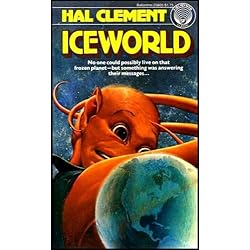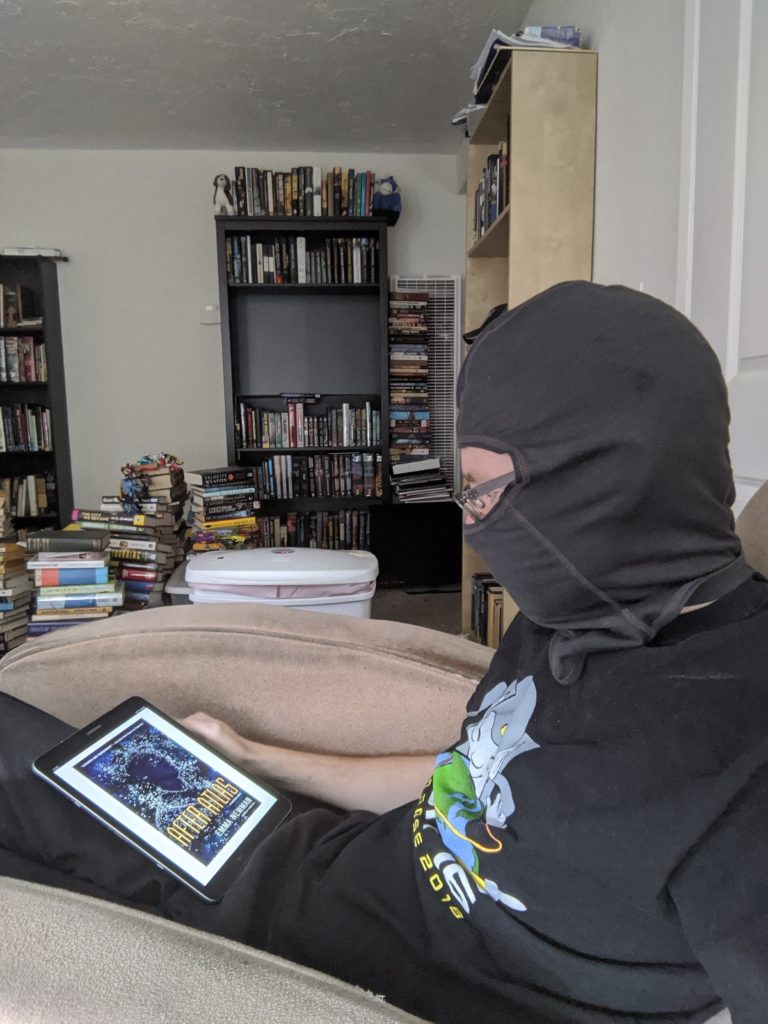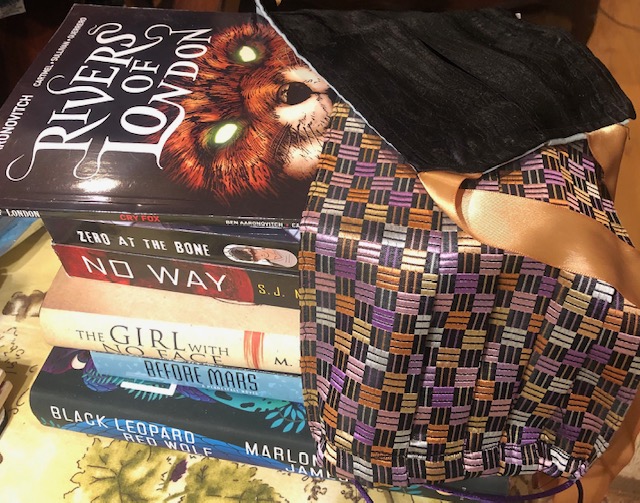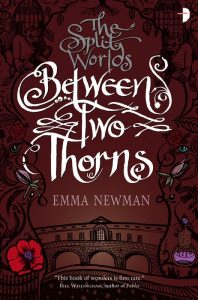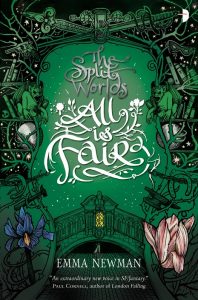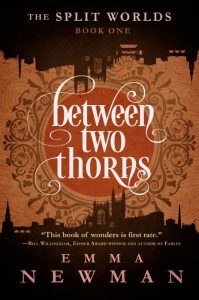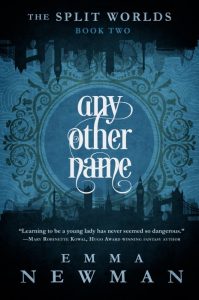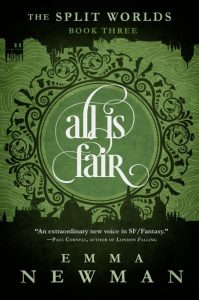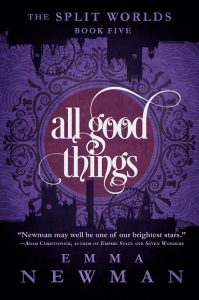(1) MURDERBOT TRAILER. Murderbot premieres May 16 on Apple TV+.
It’s rogue. It’s powerful. It would rather be watching TV. Based on the award-winning, best-selling series by Martha Wells, Murderbot follows a rogue security unit as it searches for the meaning of life.
(2) BABELING ABOUT BOOKS. Starship Alexandria is a new podcast by Emma Newman and Adrian Tchaikovsky.

The Sci-fi and Fantasy podcast from the best of futures!
In this future, humanity has solved its problems and is now sending spaceships from Earth, not in a desperate attempt to escape the apocalypse but because we can do so in a spirit of hope and exploration.
As a part of the Starship Alexandria Project, the far-future analogues of 21st century authors Emma Newman and Adrian Tchaikovsky have been tasked to make recommendations from the ship’s vast library of creative works based on the preferences of our 21st century counterparts.
Each of us will take it in turns to nominate a book, film or similar work, and the other will play judge and give the thumbs up or thumbs down to be recommended across the fleet.
Because despite the great technological advances that have made this grand journey possible, space travel can still take a while and everyone can benefit from a good recommendation.
Starship Alexandria episode 1 is “The Kraken Wakes”.
For this very first episode of Starship Alexandria, Emma puts forward John Wyndham’s classic SF novel The Kraken Wakes (1953) for Adrian to read and consider (published in the US as Out of the Deeps.)
Bonus episodes and other material are available for those who subscribe to the Starship Alexandria Patreon.
(3) MAKING A STATEMENT. Jeremy Szal forwarded the post he’s written making clear his stance on AI/LLM. Szal is also included in the Kadrey v. Meta class action lawsuit. “Statements on AI”.
Without in any way limiting the author’s and his publisher’s exclusive rights under copyright, it is expressly prohibited to use any of the author’s works to “train” generative artificial intelligence (AI) technologies to generate text. The author reserves all rights to license uses of his works across any platforms.
In addition, it is expressly prohibited to upload any part of any of this author’s work to any generative AI programs (including but not limited to Meta, ChatGPT, etc).
Any violation of these rights are infringing on copyright law (Copyright Act 1968, to name but a few examples) and may be subjected to prosecution, not including the ongoing class action lawsuit in Kadrey v. Meta – of which the author is already included.
The author also asks that no one “create” AI-generated fan-art, fanfiction, or any kind of material, based on or inspired by his works. Any emails containing such “art” will be deleted unread.
******
I will also decline to wittingly blurb or support any books that were written, in part or as a whole, with generative AI. The waters here can be murky, but if any text in the book was not written by a human, and instead was written by a machine/LLM, then I have no interest in reading it, or anything that the author ever writes.
Art is human expression created by human hands. That matters to me, and that will always matter to me, so I will give no quarter to machine-generated slop. That is my ongoing stance.
(4) A WRITER OVERCOMES. “Butt in the Chair: How Disability Changed My Writing Habits” by Catherine Tavares at the SFWA Blog.
It’s spring 2023. My desk is clean, my laptop on and humming along like a charm. It’s open to a brand new Scrivener file, and I have three hours free to work on my stories.
Only, I’m not in the chair writing. I’m on the floor in agonizing pain.
In the years since that day, there have been many doctors, tests, and treatments that have all led to the same disappointing diagnosis: unexplained, chronic nerve pain. On a good day, that means a hot, tingling buzz radiating from my hips on down. On a bad day, it’s like the entire lower half of my body is being scraped raw by fiery sandpaper.
That day, I could not sit, and just like that, I could not write.
A common bit of writing advice given to authors is to just “get your butt in the chair” and write. For a long time, that advice worked for me, and I built my habits around spending hours at my desk, not getting up until I met my goal. My desk was my writing haven; the mere act of sitting down triggered creativity, productivity, and joy.
But as the days of unending pain dragged into weeks and months, my haven became a horror….
… If I could hack my own brain, I figured, then I could most certainly hack my own writing process.
I did so, inspired by a mental health exercise called Internal Family Systems Therapy. I enjoyed IFST because it let me do what I do best: create characters, assign them roles, and take them on a journey together. IFST helped me through a lot of the trauma of disability, and it also made me realize just how much work I can do inside my own head—no desk or chair required.
In the wake of that breakthrough, I abandoned Team Pantser for a term I am making up just now: Team Daydreamer. When I’m in the shower, lying in bed, eating a meal, exercising, I meditate on my stories. I plan out the plots, worlds, characters, compose entire scenes word-for-word—all before I ever actually get my butt in the chair to write. And when I do finally get to my desk, with half the story work already done, I can spare the attention my body needs and have a productive session well within my pain limits.
I can finally physically and mentally write again….
(5) LAGNIAPPE. Dina shares “My Thoughts on The Hugo Award Finalists 2025” at SFF Book Reviews.
Isn’t it lovely when there’s a Hugo finalists announcement without too much fuss? I said this last year already, but after living through the Puppy Years and then witnessing the shit show that was the Chengdu Worldcon Hugo Awards, I always release a breath of relief when the finalists are… just normal….
Dina punctuates the ending of several categories with a recommendation about something she wishes had been a finalist, like this novella —
Books I wish were here:
Once again, let me tell you about the amazingly talented Moses Ose Utomi, who blew me away with The Lies of the Ajungo and then followed that novella up with one that’s just as great, The Truth of the Aleke. I nominated it, of course, and I will probably love and nominate the third in the trilogy next year. Man, do I wish this book was on the ballot, as it would be an easy number one spot. Since it isn’t, let me urge you to pick up the first book. It’s suuuuper short.
(6) WEIRDLY SUSPICIOUS. Christopher Lockett looks at his course outline with a Trumpian eye: “Curriculars: The Relative Weird, Part One—Horror as Privilege” at The Magical Humanist.
…Growing up, we were often taught that Canada and the U.S. share “the longest undefended border in the world.” That was always spoken with pride and approbation. Lately, I’m finding those words resonating in my mind with something less than the spirit of national confraternity, and something more like the spirit of paranoia.
This sense is exacerbated by the spectacle of the anti-“D.E.I.” jihad currently scouring government databases and websites, the first salvoes against universities, and most recently against museums and parks (and, bizarrely, zoos). The March 27 executive order about this last category employs language—such as that about removing “improper ideology” from the Smithsonian and elsewhere—reads like the Project 2025 crowd considered Orwell’s 1984 as a useful guide rather than a cautionary tale…
… In my fourth-year course “The American Weird,” I must imagine that my first three weeks would have passed muster, as we did a selection of stories by H.P. Lovecraft. As I talk about at length in my earlier post “The Trumpian Weird,” Lovecraft’s particular brand of racist ideation, in which threats to White subjectivity are allegorized by the monstrous and eldritch, is perfectly consonant with MAGA’s White nationalism. But after that? Well, I can’t imagine any of it would remain un-purged.
Last time I talked about my American Weird class in this space, I outlined a very rough breakdown of contemporary weird fiction: the banal weird, the relative weird, and the utopian weird. As I noted in that earlier post, the banal weird doesn’t tend to make for great storytelling (unless you’re China Miéville), but it is something we constantly encounter in reality, as at the root it’s about our apparently bottomless capacity to normalize the unthinkable. We don’t get Trump 2.0 without the banality of Weird. And, ironically, it is the forces that animate and facilitate Trumpism that make what I’m terming the Relative Weird a particularly significant iteration of Lovecraftian fiction…
(7) TODAY’S BIRTHDAY.
[Written by Cat Eldridge.]
Born April 9, 1937 — Marty Krofft. (Died 2023.)
H.R.Pufnstuf.
Who’s your friend when things get rough?
H.R. Pufnstuf.
Can’t do a little, ‘cause he can’t do enough
Who here didn’t grow up watching some of the shows created by the Krofft brothers? Well, this is the day that Marty Krofft was born, so I get to talk about their work. Let’s get started.
Their very first work was designing the puppets and sets for Banana Splits, a rock band composed of four animal characters for Hanna-Barbera. To get a look at them, here’s the open and closing theme from the show.
After working for Hanna-Barbera, they went independent with the beloved H. R. Pufnstuf, their first live-action, life-sized puppet series. It ran a lot shorter than I thought lasting only from September to December of ‘69. Like everything of theirs, it ended up in heavy, endless syndication.
Next was The Bugaloos. This was a musical group, very much in keeping with the tone with Banana Splits. It was four British teenagers wearing insect outfits, constantly beset by the evil machinations of the Benita Bizarre. Here’s the opening song, “Gna Gna Gna Gna Gna” courtesy of Krofft Pictures.
Sigmund and the Sea Monsters lasted two seasons though it was aired over three years, the second delayed because a fire at the beginning of season two which destroyed everything. It’s about two brothers who discover a friendly young sea monster named Sigmund who refuses to frighten people. Poor Sigmund. This time you get a full episode as that is all Krofft Pictures had up, “Frankenstein Drops In”
There’s two more series I want to note.
The first is Land of the Lost which was created though uncredited in the series by David Gerrold. So anyone know why that was? It was produced by Sid and Marty Krofft who co-developed the series with Allan Foshko. Lots of genre tropes here. A family lost in a land with dinosaurs and reptile men? It was popular enough that it lasted three seasons. And here’s the opening and closing credits for season three.
The very last pick by me is Electra Woman and Dyna Girlwhich lasted but sixteen episodes of twelve minutes. Despite the ElectraEnemies, their foes here being way over the top, this is SF though admittedly on the pulp end of things.
(8) COMICS SECTION.
- Bliss knows viewers.
- Dinosaur Comics analyzes Sherlock’s skills.
- MythTickle returns with cures.
- Speed Bump continues next rock.
- Strange Brew goes for smarter.
- WayneVision introduces the young James Bond.
- The New Yorker cartoon is about a dire predicament.
(9) SPACE COWBOY BOOKS ONLINE READING. On Tuesday April 22 at 6:00 p.m. Pacific, Space Cowboy Books will host an online reading and interview with Ai Jiang. Register for free HERE. Get your copy of A Place Near the Wind HERE.
From a rising-star author, winner of the both the Bram Stoker® and Nebula Awards, a richly inventive, brutal and beautiful science-fantasy novella. A story of family, loss, oppression and rebellion that will stay with you long after the final page. For readers of Nghi Vo’s The Empress of Salt and Fortune, Neon Yang’s The Black Tides of Heaven and Kritika H. Rao’s The Surviving Sky.
Liu Lufeng is the eldest princess of the Feng royalty and, bound by duty and tradition, the next bride to the human king. With their bark faces, arms of braided branches and hair of needle threads, the Feng people live within nature, nurtured by the land. But they exist under the constant threat of human expansion, and the negotiation of bridewealth is the only way to stop— or at least delay—the destruction of their home. Come her wedding day, Lufeng plans to kill the king and finally put an end to the marriages.
Trapped in the great human palace in the run-up to the union, Lufeng begins to uncover the truth about her people’s origins and realizes they will never be safe from the humans. So she must learn to let go of duty and tradition, choose her allies carefully, and risk the unknown in order to free her family and shape her own fate.

(10) LET ROVER COME OVER. “Lunar Outpost unveils sleek new ‘Eagle’ moon rover” at Space.com.
Colorado-based Lunar Outpost just unveiled its new “Eagle” moon rover at the Space Foundation’s 40th annual Space Symposium here, and it looks straight out of science fiction. Sporting a sleek metallic finish and ice-blue LED lighting, the Eagle rover turned quite a few heads on the expo floor this year. But Eagle boasts more than just futuristic looks.
The rover is packed with features designed with the next generation of Artemis program moon explorers in mind and is based on feedback from current NASA astronauts at NASA’s Johnson Space Center, according to Lunar Outpost’s A.J Gerner….
… In the configuration shown here at the symposium, the Eagle vehicle features two seats for crew, each with its own redundant and mirrored controls, meaning either astronaut can control the rover. The steering controls on each side consist of a single handle that controls four individual motors that drive each wheel. Each wheel can turn independently of the other three, allowing the Eagle rover to turn on its center axis or “crab walk” sideways, Gerner said….

(11) TARDIGRADE MOTION. [Item by Steven French.] If we really do want to go to Mars, perhaps we need to pay less attention to a certain billionaire and look more closely at the ‘water bear’ (recently voted Invertebrate of the Year by Guardian readers): Want to know how to survive in space? Ask a tardigrade (phys.org) at Phys.org.
The 2025 Lunar and Planetary Science Conference, which took place from March 10–14 in The Woodlands, Texas, witnessed some very interesting proposals for space exploration and science. In addition to bold mission concepts, scientists presented exciting opportunities for potential research that addresses major questions. Not the least of which was “How can humans survive in space and extraterrestrial environments”? One study in particular presented how the study of tardigrades could help address the challenges involved….
[Thanks to Kathy Sullivan, Lis Carey, Teddy Harvia, N., Jeffrey Smith, Mike Kennedy, Andrew Porter, John King Tarpinian, Chris Barkley, Cat Eldridge, SF Concatenation’s Jonathan Cowie, Mark Roth-Whitworth, and Steven French for some of these stories. Title credit belongs to File 770 contributing editor of the day johnstick.]







